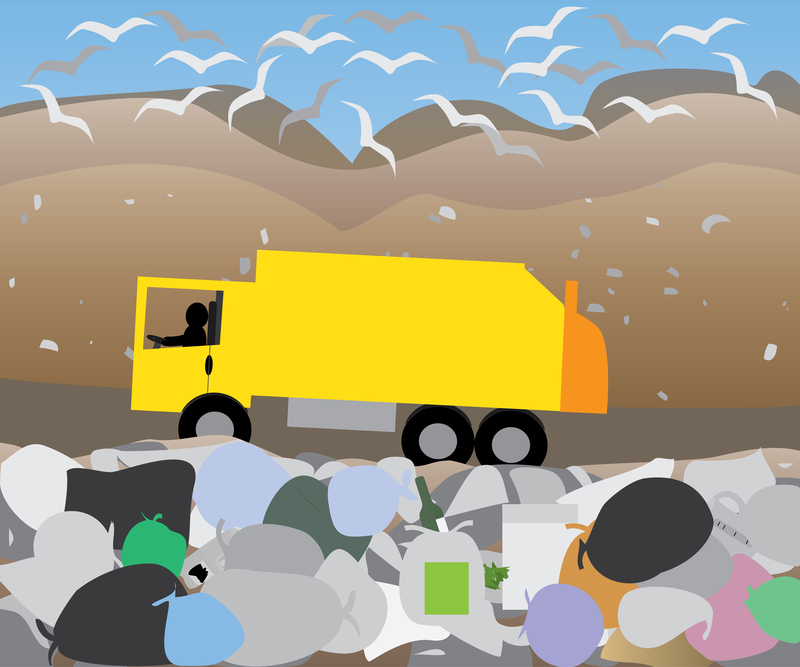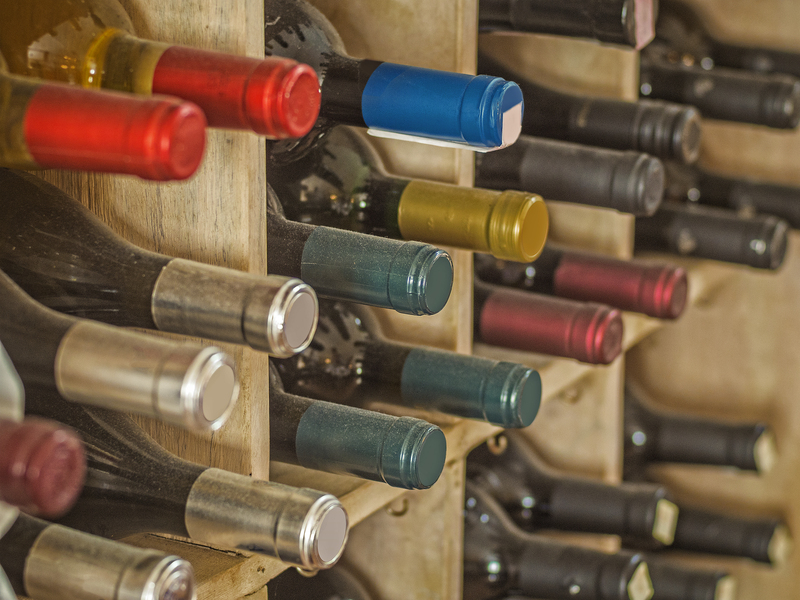Sustainable Approaches to Cardboard Disposal
Cardboard is an essential material found in almost every household, business, and industry. It's used for packaging, shipping, storage, and even art projects. However, increasing consumption brings about one major challenge: sustainable cardboard disposal. This comprehensive guide explores eco-friendly ways to dispose of cardboard, including recycling, upcycling, composting, and responsible waste management. Learn how your choices can contribute to a cleaner, greener planet.
Table of Contents
- The Importance of Sustainable Cardboard Management
- The Cardboard Waste Challenge
- Cardboard Recycling: Why and How
- How to Prepare Cardboard for Disposal
- Creative Upcycling Ideas
- Composting Cardboard
- Eco-Friendly Alternatives to Cardboard
- Sustainable Cardboard Disposal for Businesses
- Community Initiatives and Resources
- The Future of Cardboard Disposal
- Conclusion: A Collective Responsibility
The Importance of Sustainable Cardboard Management
Cardboard is one of the most widely used packaging materials worldwide. Its popularity comes from its lightweight, recyclable, and biodegradable properties. However, improper disposal can strain waste management systems and negatively affect the environment. By choosing sustainable cardboard disposal methods, individuals and businesses can significantly reduce landfill waste, conserve resources, and help fight climate change.
The Cardboard Waste Challenge
According to the Environmental Protection Agency (EPA), Americans discard millions of tons of cardboard each year. Although corrugated cardboard is one of the most recycled materials, a worrying percentage still ends up in landfills. There, it releases methane, a potent greenhouse gas, as it decomposes.
- Overconsumption: The rise of e-commerce has led to a surge in cardboard packaging waste.
- Poor Sorting: Contaminated or wet cardboard often gets rejected from recycling streams.
- Lack of Awareness: Many people are unaware of alternative, eco-friendly disposal methods.
Addressing these challenges requires a combination of personal commitment and systemic change.
Cardboard Recycling: Why and How
Recycling is the most common and effective method for sustainable cardboard waste disposal. When cardboard is recycled:
- It conserves trees and reduces the demand for raw materials
- It saves energy (producing new cardboard from recycled content uses up to 50% less energy)
- It minimizes landfill burden and environmental impact
Types of Cardboard Accepted for Recycling
- Corrugated cardboard: Used in shipping boxes and packaging materials
- Paperboard: Thinner varieties used in cereal boxes, shoe boxes, etc.
Steps for Effective Cardboard Recycling
- Remove Packaging Materials: Ensure the cardboard is free from plastic, foam, and non-paper inserts.
- Flatten Boxes: This saves space and makes transportation easier.
- Keep it Dry: Wet or food-soiled cardboard can contaminate recycling streams.
- Check Local Guidelines: Each municipality may have specific rules for cardboard disposal and recycling.
- Utilize Drop-off Points: Many recycling centers and grocery stores accept cardboard even if curbside pickup isn't available.
By following these steps, you contribute to building a circular economy where materials are reused and waste is minimized.
How to Prepare Cardboard for Disposal
Proper preparation is vital for efficient cardboard recycling or other sustainable disposal methods. Here's a handy checklist:
- Remove all tape and labels - This helps recycling centers process the material more efficiently.
- Cut large boxes - Break down oversized cardboard to fit recycling bins or compost piles.
- Avoid contamination - Keep oil, food, and liquids away from cardboard to maintain its recyclability.
- Stack and bind - Group smaller pieces together for easier pickup.
Careful sorting and preparation are the first steps toward eco-friendly cardboard waste management.
Creative Upcycling Ideas
Don't toss your cardboard just yet! Many types of cardboard can be repurposed in innovative ways, extending their life and reducing waste. Upcycling is a sustainable approach to cardboard disposal that encourages creative reuse.
Fun and Practical Upcycling Projects
- Organizational Solutions: Create drawer dividers, magazine holders, or storage bins.
- Children's Projects: Build playhouses, forts, toy swords, or puzzles.
- Gardening Helpers: Use cardboard for weed suppression, seed starting trays, or compost layers.
- Art and Decor: Craft wall art, custom picture frames, or holiday ornaments.
- Pet Accessories: Construct scratching posts or small shelters for pets.
Tip: Explore upcycling cardboard with your local arts center or school for community-oriented projects.
Composting Cardboard
Not all cardboard needs to head to the recycling facility. Certain types, particularly plain brown cardboard without plastic coatings or excessive ink, can be composted at home.
Why Compost Cardboard?
- It adds carbon (the "brown" in composting) to your compost pile, balancing "green" nitrogen-rich materials.
- It breaks down into organic matter, nourishing your soil.
- Reduces methane emissions from landfills by intercepting biodegradable waste.
How to Compost Cardboard Correctly
- Shred or tear into small pieces for faster decomposition.
- Mix thoroughly with food scraps, garden waste, and other compostable materials.
- Avoid glossy or coated cardboard, as these contain plastics that do not break down easily.
- Keep it moist but not soggy to maintain the right composting conditions.
Composting is an excellent sustainable method for cardboard disposal that returns nutrients to the environment.
Eco-Friendly Alternatives to Cardboard
While the focus is on sustainable disposal, it's equally important to reduce cardboard usage in the first place. Here are some alternatives:
- Reusable Storage Containers: Opt for bins made from recycled plastic or metal where possible.
- Cloth Bags: For shopping or transporting goods, use reusable bags instead of cardboard boxes.
- Bulk Purchasing: Buying in bulk often leads to less packaging waste overall.
- Digital Instructions and Invoices: Minimize cardboard inserts wherever possible.
Remember: The most sustainable option is prevention--minimizing consumption leads to less need for eco-friendly cardboard disposal.
Sustainable Cardboard Disposal for Businesses
Businesses and organizations are major contributors to cardboard waste, especially in retail, logistics, and e-commerce sectors. Implementing responsible disposal programs is both environmentally and economically sensible.
Best Practices for Commercial Cardboard Waste Management
- Employee Education: Train staff in proper sorting, recycling, and reusing techniques.
- Partner with Certified Recyclers: Choose recycling vendors with transparent, sustainable practices.
- Monitor and Measure Waste: Conduct regular waste audits to track progress and set targets.
- Offer Customer Take-Back Programs: Encourage customers to return excess packaging for recycling.
- Switch to Sustainable Packaging: Adopt recyclable or compostable materials for products and shipping.
Green business practices not only promote sustainable cardboard management but also boost your company's reputation.
Community Initiatives and Resources
Your local community may offer several resources to help with sustainable cardboard disposal:
- Curbside Recycling Programs: Most municipalities collect cardboard curbside on scheduled days.
- Community Drop-off Locations: Recycling centers and grocery stores may accept flattened cardboard.
- Local Composting Collectives: Community gardens or compost hubs sometimes accept cardboard as carbon sources.
- Donation Programs: Schools, churches, and arts organizations often collect cardboard for projects.
- Public Awareness Campaigns: Join or start initiatives that educate neighbors about sustainable disposal.
Check with your town or city's waste management department for updated cardboard recycling guidelines and opportunities.
The Future of Cardboard Disposal
As awareness grows about environmental protection, so does innovation in packaging and waste management. The future of sustainable cardboard disposal includes:
- Smarter Packaging Design: Businesses are using less material and adopting easily recyclable substrates.
- Advanced Recycling Technologies: New processes remove contaminants more efficiently, increasing recycling rates.
- Biodegradable and Compostable Packaging: Cardboard products are being engineered to degrade even in less-than-ideal conditions.
- Consumer Education: Ongoing initiatives motivate households and businesses to take responsibility for their waste.
By staying informed and making conscious choices, everyone can play a part in the evolving landscape of sustainable waste management.
Conclusion: A Collective Responsibility
Every piece of cardboard counts. Whether you recycle, upcycle, compost, or reduce your use, your decisions have a lasting impact on the planet. By adopting sustainable cardboard disposal approaches, individuals and businesses can help conserve resources, reduce pollution, and create a more circular economy.
Start today:
- Recycle every eligible box
- Get creative and upcycle when possible
- Compost plain cardboard
- Share knowledge with your community
Together, we can turn a simple act like proper cardboard disposal into a powerful force for a cleaner, more sustainable world.

